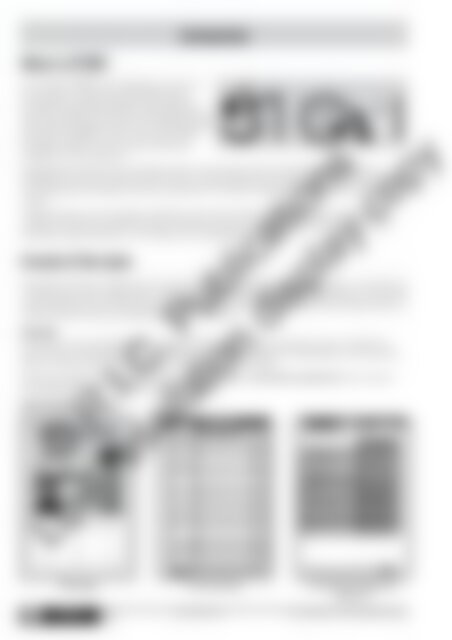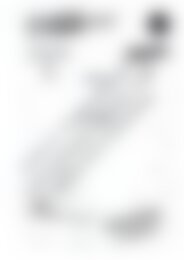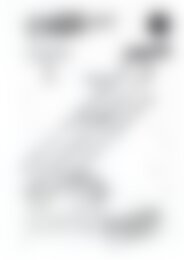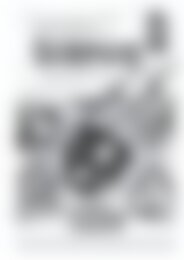6172RB Science a STEM approach Year 2 low res watermark
Create successful ePaper yourself
Turn your PDF publications into a flip-book with our unique Google optimized e-Paper software.
Introduction<br />
What is <strong>STEM</strong>?<br />
In a nutshell, <strong>STEM</strong> is the integration of science,<br />
technologies, engineering and mathematics<br />
concepts using project-based and cooperative<br />
learning. Educators have been integrating learning<br />
areas since the beginning of time, so although the<br />
idea behind <strong>STEM</strong> is not new, this series hopes<br />
to make it easier for you to execute learning<br />
integration in the classroom.<br />
The Australian Government, and governments around the world, have placed a high priority on<br />
<strong>STEM</strong> skills. The future workforce will require current students to be creative and critical thinkers who<br />
can collaborate and design solutions to problems. The skills utilised in <strong>STEM</strong> have never been more<br />
valued.<br />
<strong>STEM</strong> education aims to prepare students for the roles of the future with skills such as innovation,<br />
creativity, reasoning, problem-solving, and technical science skills such as questioning, observing,<br />
systematic experimentation, and analysis and interpretation of data.<br />
Format of this book<br />
This series focuses on delivering a comprehensive and contemporary science program, culminating in<br />
a <strong>STEM</strong> project which applies the scientific knowledge acquired during the science lessons. The series<br />
incorporates the use of online <strong>res</strong>ources, digital devices and iPad® applications where appropriate, in<br />
order to enhance the use of technology in the classroom.<br />
The units<br />
The science units are organised by sub-strand—Biological sciences, Chemical sciences, Earth and<br />
space sciences and Physical sciences. At the start of each sub-strand unit, keywords, a unit overview<br />
and curriculum scope and sequence are provided, as shown be<strong>low</strong>.<br />
Each unit contains a term’s worth of work with 5–7 lessons, a summative assessment of the science<br />
knowledge with teacher notes, and a <strong>STEM</strong> project.<br />
Unit overview<br />
Chemical sciences<br />
LIVING IN A MATERIAL WORLD<br />
materials<br />
change<br />
properties<br />
hard<br />
strong<br />
bendy<br />
Keywords<br />
soft<br />
smooth<br />
stretchy<br />
absorbent<br />
waterproof<br />
see-through<br />
combine<br />
R.I.C. Publications® – www.ricpublications.com.au 978-1-925431-95-7 YEAR <strong>Science</strong>:<br />
2 A <strong>STEM</strong> APPROACH 39<br />
mix<br />
uses<br />
purpose<br />
mixture<br />
recycle<br />
Unit overview<br />
40 <strong>Science</strong>: YEAR<br />
A <strong>STEM</strong> APPROACH 2<br />
Chemical sciences<br />
LIVING IN A MATERIAL WORLD<br />
Different materials can be combined for a particular purpose (ACSSU031)<br />
Lesson 1<br />
Students recall their prior knowledge of different materials<br />
What are materials? and their properties. Students then explore the properties<br />
What properties do of objects made from different materials and test their<br />
materials have?<br />
knowledge of materials and their properties using an<br />
interactive game.<br />
Lesson 2<br />
Students explore the school playground to find examples<br />
What materials are of how different materials have been used and take a digital<br />
found in the local photograph of each use. Students record the material each<br />
environment? What are object is made from and list the properties which make that<br />
their properties? How material useful for the object.<br />
are they used?<br />
Lesson 3<br />
Students observe images of objects that have been made<br />
What happens when by combining different materials together. Students explore<br />
materials are mixed? the work of Charles Macintosh, a chemist who created<br />
Do their properties waterproof jackets by combining rubber with fabric. They<br />
change?<br />
then apply their knowledge of combining materials to<br />
draw and label a design for a house that is suitable for an<br />
underwater environment.<br />
Lesson 4<br />
Students explore toys that are made from different<br />
What different<br />
materials and toys that are made from more than one<br />
materials are toys made material. Students discuss why each material has been<br />
from? Why?<br />
used to create a particular toy and then use this knowledge<br />
to draw and label a design of a toy that uses different<br />
materials for different parts.<br />
Lesson 5<br />
Students explore how materials are mixed together for<br />
What happens to the different purposes by examining breakfast foods that are<br />
property of materials mixtu<strong>res</strong> and non-mixtu<strong>res</strong>. Students conduct experiments<br />
when they are used to to explore different mixtu<strong>res</strong> that are commonly used while<br />
create a mixture? cooking and suggest different uses for each.<br />
Lesson 6<br />
Students explore what happens to paper after they place<br />
How does paper it in a recycling bin and how different materials are mixed<br />
recycling involve together to recycle the paper we throw away. They then<br />
mixing materials? apply this knowledge to create a papier-mâché bowl using<br />
recycled egg cartons and discuss how mixing materials<br />
together created a bowl with different properties to the<br />
original egg carton.<br />
Summative assessment Assess students’ knowledge of the materials that different<br />
objects are made from and their properties and how<br />
materials are combined or mixed together for particular<br />
purposes.<br />
<strong>STEM</strong> project<br />
Students combine materials to recreate an oil spill and<br />
Oil spill clean-up then devise a a method to remove the oil from the water<br />
and from bird feathers that have been affected by the oil.<br />
Students record a video describing the most effective<br />
method and how this could be applied to the real world.<br />
978-1-925431-95-7 R.I.C. Publications® – www.ricpublications.com.au<br />
Title page Unit overview Curriculum scope and<br />
sequence<br />
Pages<br />
42–45<br />
46–48<br />
49–52<br />
53–55<br />
56–60<br />
61–63<br />
64–65<br />
66–74<br />
Chemical sciences<br />
LIVING IN A MATERIAL WORLD<br />
Curriculum scope and sequence<br />
SCIENCE UNDERSTANDING<br />
Different materials can be combined for a particular purpose (ACSSU031)<br />
SCIENCE AS A HUMAN ENDEAVOUR<br />
<strong>Science</strong> involves observing, asking questions about, and describing<br />
changes in, objects and events (ACSHE034)<br />
People use science in their daily lives, including when caring for their<br />
environment and living things (ACSHE035)<br />
SCIENCE INQUIRY SKILLS<br />
Questioning and predicting<br />
Pose and <strong>res</strong>pond to questions, and make predictions about familiar<br />
objects and events (ACSIS037)<br />
Planning and conducting<br />
Participate in guided investigations to explore and answer questions<br />
(ACSIS038)<br />
Use informal measurements to collect and record observations, using<br />
digital technologies as appropriate (ACSIS039)<br />
Processing and analysing data and information<br />
Use a range of methods to sort information, including drawings and<br />
provided tables and through discussion, compare observations with<br />
predictions (ACSIS040)<br />
Evaluating<br />
Compare observations with those of others (ACSIS041)<br />
Communicating<br />
Rep<strong>res</strong>ent and communicate observations and ideas in a variety of ways<br />
(ACSIS042)<br />
Unit overview<br />
Lesson<br />
<strong>STEM</strong><br />
1 2 3 4 5 6 Assessment<br />
project<br />
© R.I.C. Publications<br />
Low <strong>res</strong>olution display copy<br />
R.I.C. Publications® – www.ricpublications.com.au 978-1-925431-95-7 YEAR <strong>Science</strong>:<br />
2 A <strong>STEM</strong> APPROACH 41<br />
iv<br />
<strong>Science</strong>:<br />
A <strong>STEM</strong> APPROACH<br />
YEAR<br />
2<br />
978-1-925431-95-7 R.I.C. Publications® – www.ricpublications.com.au


